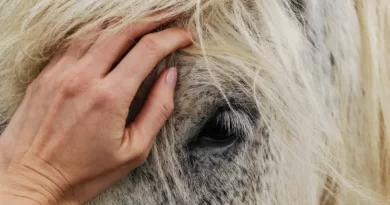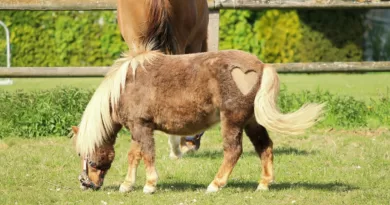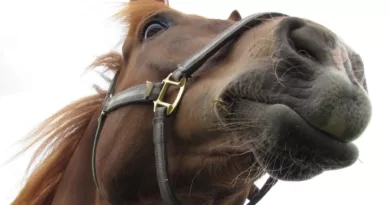How to Bridle a Horse
Understanding the Basics of Horse Bridling
Horse bridling is an essential skill that every horse owner or rider should have. It involves the process of putting on a bridle, which includes fitting the bit into the horse’s mouth and securing the headstall around the horse’s head. The bridle is a crucial piece of equipment that allows you to communicate with your horse and control its movements while riding.
To begin with, it is important to choose the right bridle for your horse. Bridles come in various styles, sizes, and materials, so it’s essential to select one that fits your horse comfortably and suits the type of riding you will be doing. A well-fitted bridle should not cause any discomfort or restrict the horse’s movements. Once you have the appropriate bridle, the next step is to gather all the necessary equipment and prepare it for use. This includes checking the condition of the bridle, making sure the bit is clean and free from any damage, and ensuring that all the straps and buckles are in good working order.
Choosing the Right Bridle for Your Horse
There are various factors to consider when choosing the right bridle for your horse. The first thing to determine is the purpose of the bridle. Are you using it for everyday riding, dressage, or jumping? Different disciplines may require different types of bridles.
Next, consider the size and conformation of your horse’s head. It is essential that the bridle fits properly and comfortably. Measure the circumference of the horse’s head at the cheekbone level and choose a bridle size accordingly. Additionally, pay attention to the width of the browband, noseband, and throatlatch, ensuring they are appropriate for your horse. Finally, consider the material and craftsmanship of the bridle. Quality leather or synthetic materials are durable and will withstand regular use. Take your time to research and try different bridles to find the perfect fit for your horse.
Preparing the Bridle and Equipment
Once you have chosen the appropriate bridle for your horse, it is essential to prepare it and the necessary equipment before bridling your horse. Begin by ensuring that the bridle is clean and free from any dirt or debris that could cause discomfort or irritation to your horse. Use a soft brush or cloth to gently remove any dust or hair from the leather. If necessary, you can also use a leather cleaner or conditioner to keep the bridle supple and in good condition.
Next, check the condition of all the parts of the bridle and make sure that everything is in working order. Inspect the reins, cheekpieces, throatlatch, and browband for any signs of wear or damage. If any part appears worn or frayed, it is best to replace it before using the bridle.
Additionally, ensure that all the buckles, snaps, and other fastenings are secure and functioning correctly. You don’t want any surprises while you are handling your horse. Take a moment to untangle any knots in the reins or straps, making it easier to put on the bridle smoothly. This preparation will ensure that you have a well-functioning and comfortable bridle to use when approaching your horse.
Approaching and Greeting the Horse
As you approach the horse, it is important to remain calm and confident. Horses are incredibly perceptive animals, and they can sense your emotions and demeanor. Approach the horse from the side or front in a slow and deliberate manner, avoiding sudden movements or loud noises. This will help establish a sense of trust and ease any potential anxiety the horse may have. Once you are within a few feet of the horse, extend your arm and allow the horse to sniff and investigate you. This gentle introduction helps the horse become more comfortable with your presence.
When greeting the horse, it is essential to remember to maintain a respectful distance. Avoid crowding the horse’s personal space, as this may make them feel threatened or anxious. Instead, stand a few feet away and observe their body language. Look for signs of relaxation, such as a lowered head, soft eyes, and ears pointed forward or slightly to the side. If the horse appears interested and curious, you may proceed to the next step of the bridling process. However, if the horse seems tense, nervous, or agitated, it is best to take a step back and give them more time to acclimate to your presence.
Positioning Yourself Safely and Calming the Horse
When it comes to positioning yourself safely while bridling a horse, it is crucial to maintain awareness of your surroundings and adopt a cautious stance. Stand alongside the horse, slightly towards the front, and ensure that you have a clear path in case the horse makes sudden movements. Avoid standing directly in front of the horse, as this may put you at risk of getting kicked. Additionally, it is important to remain calm and composed during the process. Horses are highly sensitive animals and can easily pick up on any nervousness or anxious energy. Speak to the horse in a soothing tone and try to establish a sense of trust and relaxation before proceeding with bridling.
To calm the horse, it is beneficial to initiate some gentle bonding activities. Approach the horse slowly and confidently, avoiding any sudden movements that may startle it. Before attempting to bridle, spend a few moments stroking and patting the horse’s neck or shoulder, offering reassurance and building a connection. Pay attention to the horse’s body language – if it seems particularly anxious or nervous, consider delaying the bridling process until it is more at ease. By creating a calm and positive environment, you are more likely to succeed in positioning yourself safely and gaining the horse’s cooperation during the bridling endeavor.
Opening the Horse’s Mouth and Inserting the Bit
To properly insert the bit into the horse’s mouth, it is important to approach the task with patience and care. Begin by standing on the left side of the horse, near its shoulder. Gently take hold of the bridle near the bit, and slide your left hand up the horse’s face to the side of its head, just above the upper jaw. Apply light pressure with your thumb to the horse’s cheek, encouraging it to open its mouth. Simultaneously, use your right hand to hold the bit, placing your thumb on the outside of the bit and your fingers on the inside. Slowly and gently insert the bit into the horse’s mouth, being careful not to bump its teeth or cause any discomfort.
As you insert the bit into the horse’s mouth, it is important to observe the horse’s reaction and adjust accordingly. Some horses may resist the bit or show signs of discomfort, such as tossing their head or clenching their jaw. In such cases, it is crucial to remain patient and calm, allowing the horse to adjust and accept the bit at its own pace. If the horse continues to resist, it may be helpful to gently stroke its neck or talk soothingly to reassure it. Remember, it is essential to establish trust and a positive association with the bit for a successful and comfortable bridle fitting.
Adjusting the Bridle to Ensure Proper Fit
Once you have placed the bridle on your horse’s head and adjusted the noseband and throatlatch, it is important to ensure a proper fit to ensure your horse’s comfort and safety. The first step in adjusting the bridle is to check the length of the cheekpieces. These are the straps that attach the bit to the headstall. Ideally, they should be adjusted so that the bit sits comfortably in the horse’s mouth without putting too much pressure on the corners or pulling the corners of the mouth back.
To adjust the cheekpieces, start by loosening them enough so that you can easily move the bit within the horse’s mouth. Then, with one hand, hold the bit level while gently pulling on the cheekpiece with the other hand to remove any slack. It is important to ensure that the bit sits in the horse’s mouth at the correct height. The general rule is to position the bit so that the wrinkles in the horse’s lips are just visible, indicating that there is enough room for the horse to move its jaw comfortably.
Once you have adjusted the cheekpieces, check that the browband sits comfortably across the horse’s forehead. It should not be too tight, as this can cause discomfort and restrict the horse’s movement. Similarly, it should not be too loose, as it may slide down and obstruct the horse’s vision. Ensure that the browband lies flat against the horse’s head without putting excessive pressure on the temples or ears. By taking the time to properly adjust the bridle to ensure a proper fit, you will ensure your horse’s comfort and enhance your overall riding experience.
Securing the Bridle and Checking for Comfort
To ensure the bridle is properly secured and provides comfort for the horse, several steps should be followed. Once the bridle is in place on the horse’s head, ensure that the throatlatch is neither too tight nor too loose. Adjusting the throatlatch properly is crucial, as it prevents the bridle from slipping off the horse’s head while still allowing for unrestricted movement.
Next, check that the noseband fits snugly around the horse’s nose, but not too tight to restrict breathing. It should be positioned approximately two fingers’ width below the horse’s cheekbone. A well-fitted noseband helps to keep proper control while ensuring the horse’s comfort.
Moving on, take a moment to ensure the browband is properly positioned. It should sit just below the base of the ears, neither too high nor too low. Adjusting the browband correctly ensures that it doesn’t interfere with the horse’s movement or cause discomfort around the sensitive area of the ears.
Lastly, check the buckles and fastenings on the bridle. All straps should be securely fastened and the buckles properly adjusted to avoid pinching or rubbing on the horse’s skin. Additionally, ensure there are no twists or knots in the reins or cheekpieces, as these can cause discomfort and hinder communication between the rider and horse.
Taking the time to secure the bridle properly and checking for comfort is essential in ensuring a positive riding experience for both horse and rider.
Teaching the Horse to Accept the Bridle
Once you have properly prepared the bridle and positioned yourself safely, it is time to teach the horse to accept the bridle. This step is essential in ensuring a smooth and stress-free bridling experience for both you and your horse.
Begin by approaching the horse calmly and confidently. Speak to the horse in a soothing tone, reassuring them that everything is okay. Gently stroke their neck and forehead to help them relax. Slowly bring the bridle up to the horse’s head, allowing them to sniff and investigate it. If the horse shows any signs of resistance, such as pulling away or tossing their head, take a step back and give them a moment to calm down. Patience is key during this process, as forcing the bridle on the horse may cause them to become fearful or anxious. Remember, building trust and a positive association with the bridle is crucial for successful acceptance.
Practice and Maintenance Tips for Bridling Success
To ensure successful bridling practices, it is essential to establish a consistent routine with your horse. Regular practice sessions not only reinforce the horse’s understanding of the process but also help build trust and rapport between both horse and handler. Begin by calmly approaching and greeting the horse, ensuring a positive start to the bridling experience. Position yourself safely by standing on the left side of the horse, close to its shoulder, carefully avoiding any potential dangers.
When opening the horse’s mouth and inserting the bit, it is crucial to have a gentle touch. Applying too much force or causing discomfort can lead to resistance and make the bridling process challenging. As you insert the bit, ensure it is correctly positioned in the horse’s mouth, allowing for comfortable movement and communication between horse and rider. Adjusting the bridle is also vital for a proper fit. Check that the browband rests comfortably behind the horse’s ears, the noseband is snug but not too tight, and the throat latch is secure without restricting breathing.
What is the purpose of a horse bridle?
The purpose of a horse bridle is to provide control and communication between the rider and the horse. It includes the bit, which goes in the horse’s mouth, and the reins, which the rider uses to guide the horse.
How do I choose the right bridle for my horse?
When choosing a bridle, consider the size and shape of your horse’s head, the type of riding you’ll be doing, and your personal preference. It’s important to ensure that the bridle fits well and is comfortable for your horse.
How do I prepare the bridle and equipment before bridling my horse?
Before bridling your horse, make sure the bridle is clean and in good condition. Check that all the buckles and fastenings work properly, and ensure that the bit is clean and free from any sharp edges.
How should I approach and greet the horse when preparing to bridle?
Approach the horse calmly and confidently, making sure to approach from the side rather than directly in front or behind. Gently stroke the horse’s neck or shoulder to establish a connection and show your intention.
How can I position myself safely and calm the horse while bridling?
Stand on the same side as the horse’s head, facing forward. Keep a safe distance from the horse’s hindquarters and be aware of any signs of discomfort or anxiety. Speak softly and use gentle strokes to calm the horse.
How do I open the horse’s mouth and insert the bit?
Gently press your thumb on the horse’s lips near the corner of its mouth to encourage it to open its mouth. Once the mouth is open, carefully insert the bit and slowly move it to the correct position between the horse’s teeth.
How do I adjust the bridle to ensure a proper fit?
Adjust the bridle so that it sits comfortably on the horse’s head. The browband should be positioned above the horse’s ears, the throatlatch should be snug but not too tight, and the cheekpieces should be adjusted to the appropriate length.
How do I secure the bridle and check for comfort?
Fasten the buckles or snaps on the bridle securely, making sure they are not too tight or too loose. Check that the bit sits comfortably in the horse’s mouth and does not pinch or cause any discomfort.
How can I teach my horse to accept the bridle?
Start by introducing the bridle gradually, allowing the horse to smell and inspect it. Use positive reinforcement, such as treats or praise, to reward the horse for accepting the bridle. Patience and consistency are key in teaching your horse to accept the bridle.
What are some practice and maintenance tips for successful bridling?
Regularly clean and inspect your bridle for any signs of wear or damage. Practice bridling your horse regularly to improve your technique and your horse’s acceptance. If you encounter any difficulties, seek guidance from a professional trainer or experienced horse person.




